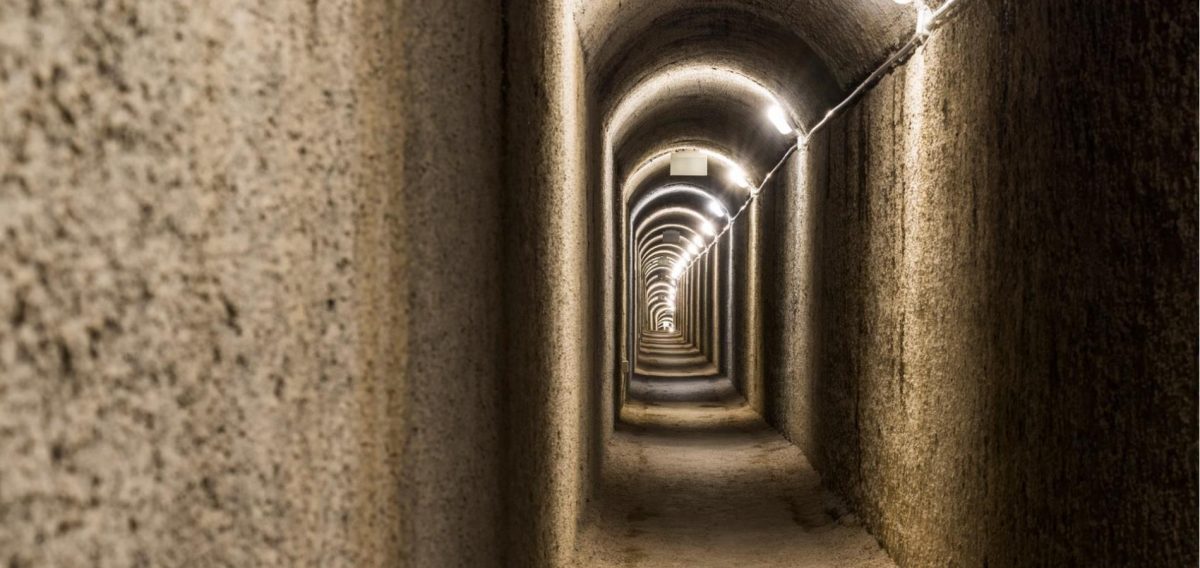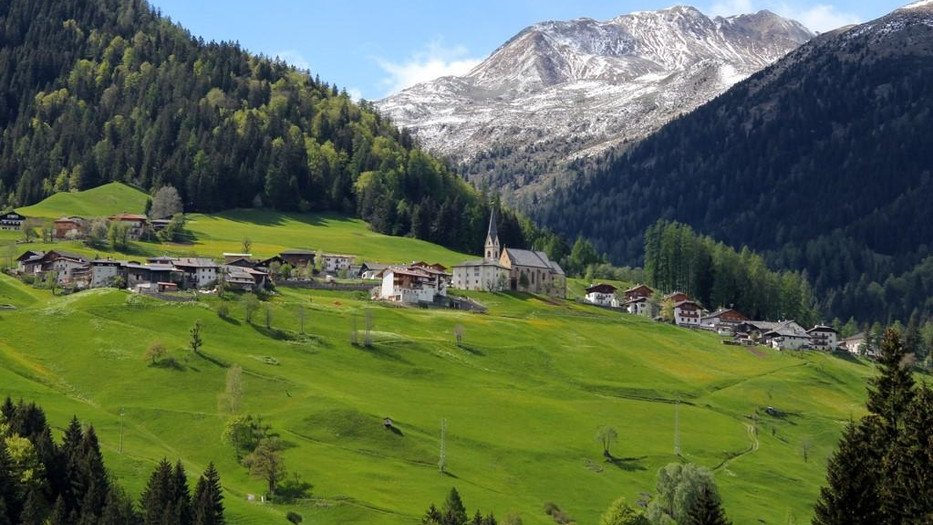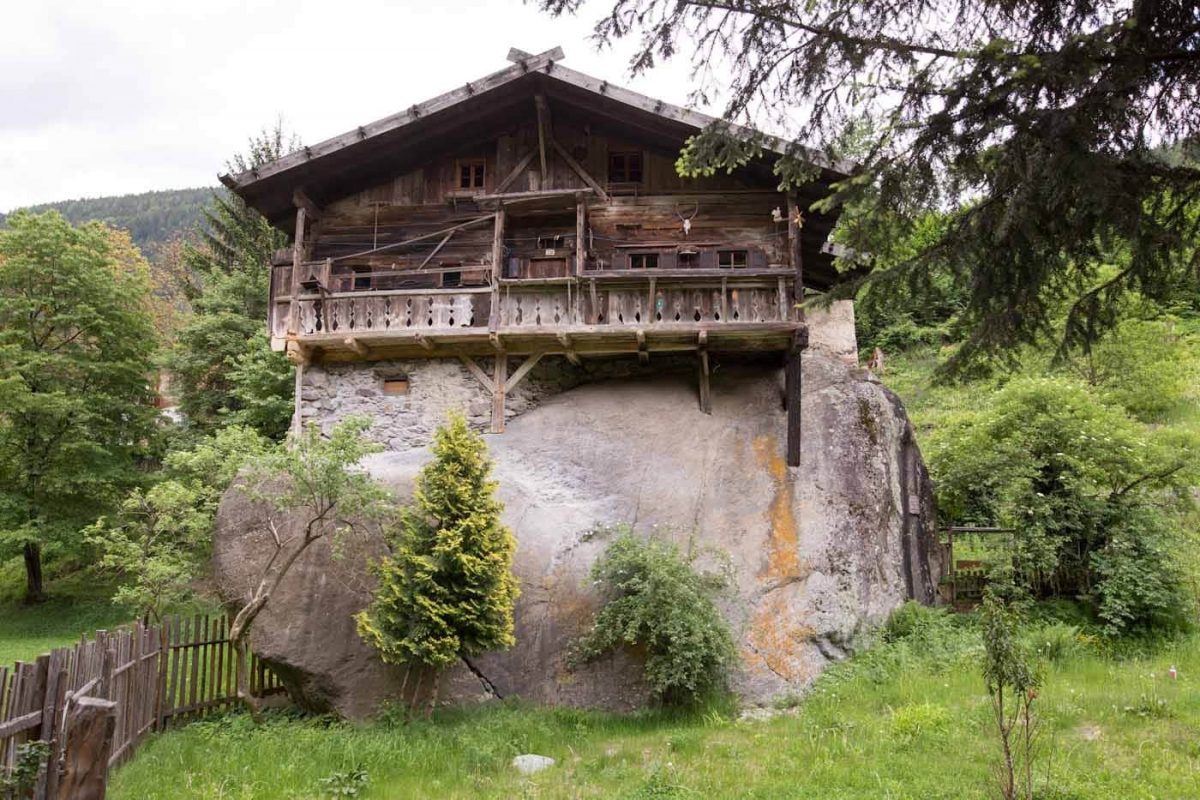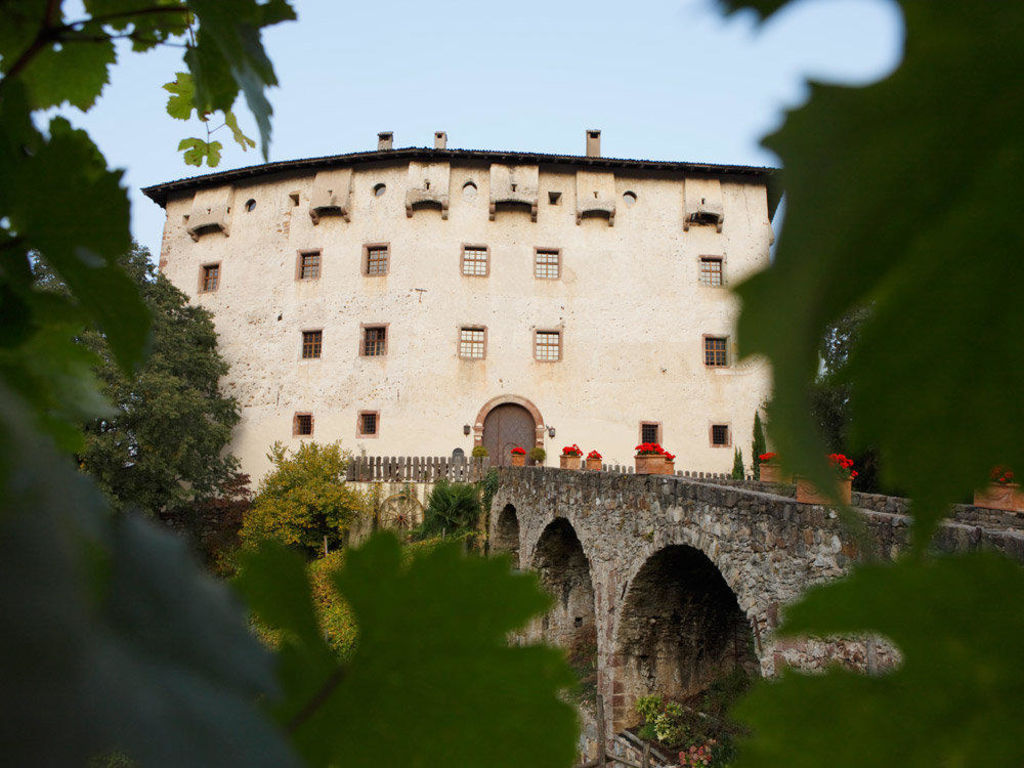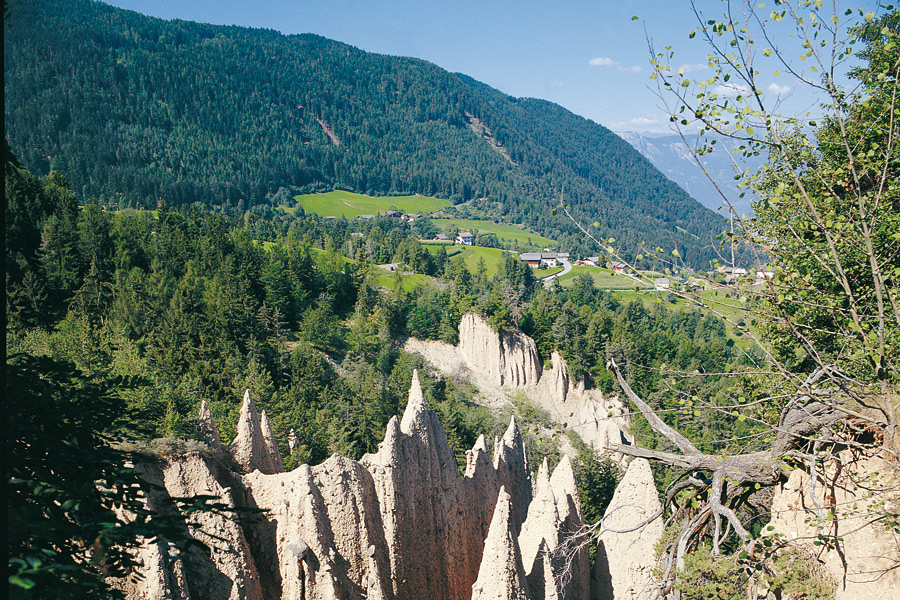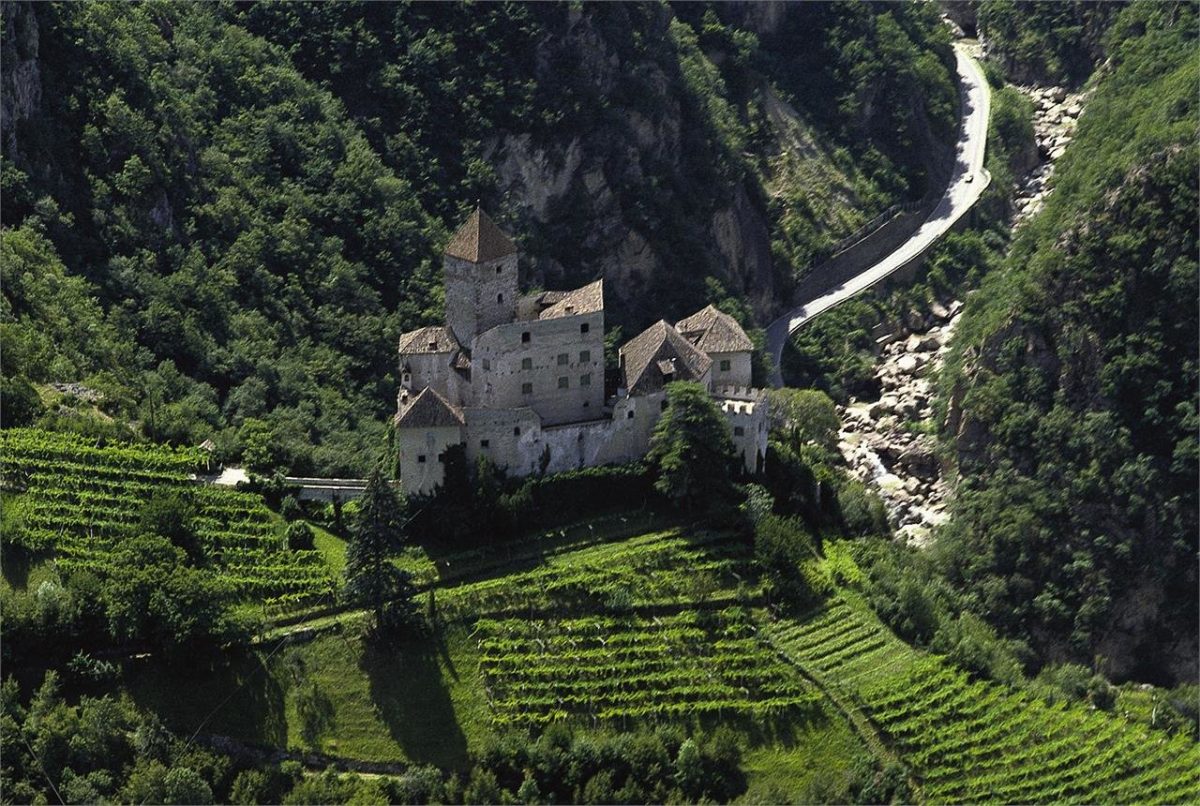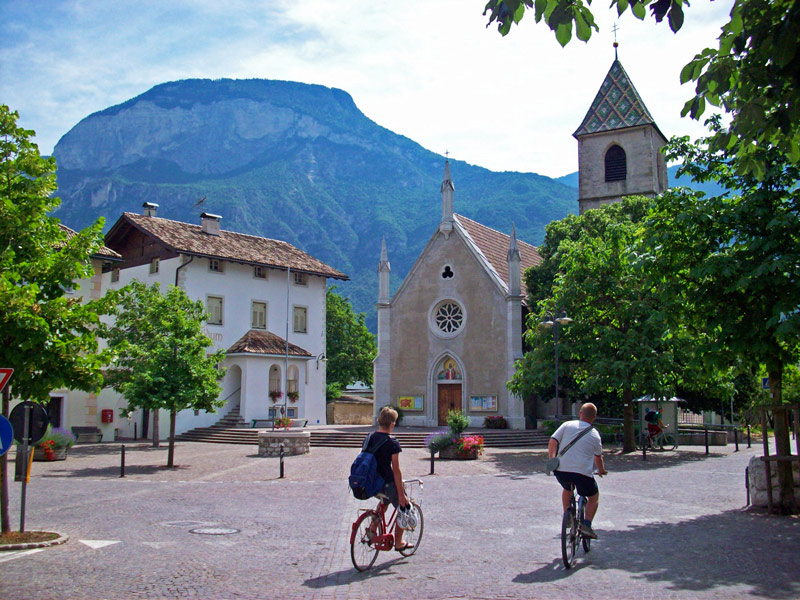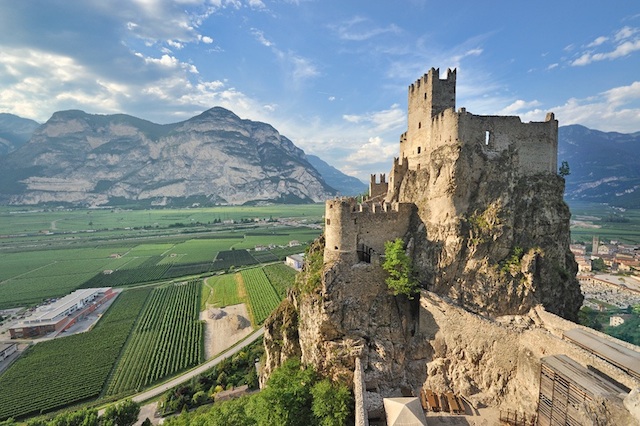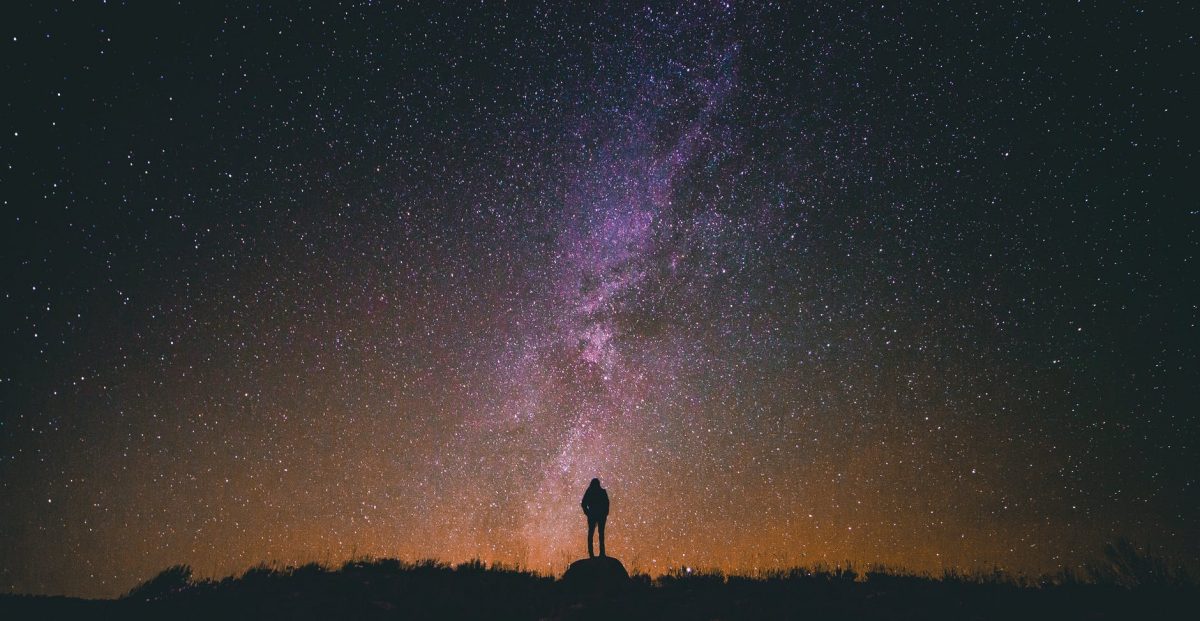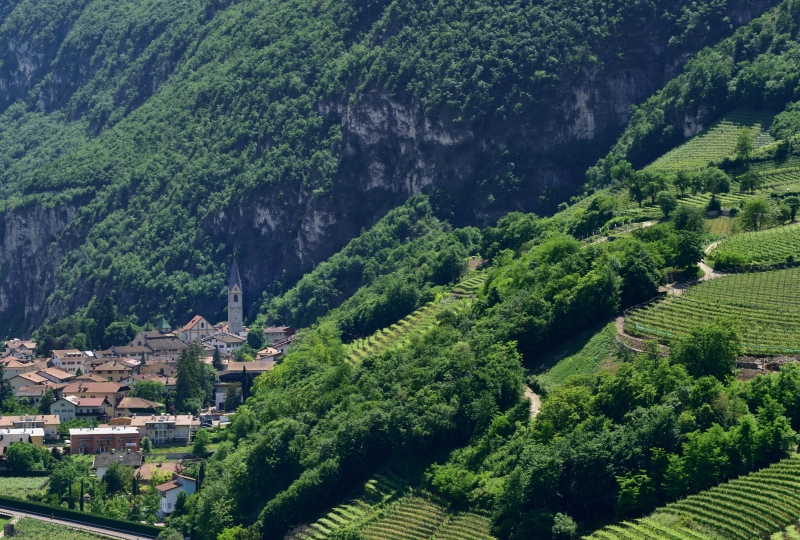How to reach Kurtinig on the Wine Road
Attractions:
– Haderburg | Salorno
– Castelfeder | Montagna
Kurtinig is situated in the middle of the Etsch Valley. At a bit less than 2 km² in area, it is the second-smallest village in South Tyrol; the only village without forest, without mountains, without hamlets and, in addition, the village with the lowest difference in altitude (209 – 212 metres).
It is also the only village of the Etsch Valley where the historic center was built in the middle of the valley, although the region was formerly quite swampy. Findings from the Stone Age and Roman times prove that the sides of the river Adige were a profitable hunting and fishing region. Before work was carried out along the river in 1893, the village was surrounded by the arms of the river Adige, which often lead to flooding. This resulted in the village being given the name ‘Little Venice’.
The large cobblestone village square with its lovingly renovated well invites you to rest for a while. In 1996, a piece of property owned by the village was transformed into a biotope where the original flora and fauna of this region could find a place to survive.
This initiative was organised by seven farmers who also created similar natural habitats in their own orchards and fields. For this reason, they received the Prize for the Conservation of the Countryside by the province of South Tyrol in 2003.
Kurtinig is also known to be the village of house grapevines, given the vines grow on many facades. It is tradition to plant a grapevine beside a house, particularly when the first child is born, when the farmhouse is transferred to a son, or when the farmhouse is newly built or reconstructed.
Art & Culture
The landscape and geographic location have formed the life of the people here for many years. At every turn, you meet local culture and tradition. Numerous archaeological findings in this region bear witness to an interesting past: the Freienfeld menhir, the mysterious stone in Graun, the legendary castle hill in Entiklar, the Roman torso of the god Mercury…
In Fennhals, the best-kept copper smelting facility in South Tyrol was found, consisting of five contiguous copper smelting pots from the Bronze Age (from around 1400 B.C.). The recovery of the blocks – unique in Europe – took place in two parts. Three ovens are now in the South Tyrol Museum of Archaeology and the other two are presented in the centre of Kurtatsch.
Wine & Gastronomy
Everything along the Alto Adige Wine Road revolves around wine. And what’s better than good wine? Good wine paired with good food! Thanks to the fact that you find yourself at the intersection of different cultural influences, the culinary choices in Kurtatsch, Margreid and Kurtinig are characterised by the interesting merging of Italian and Austrian cuisines. Whatever you are craving for, there is surely something you can find here to tickle your taste buds. The only problem is the torture of choosing. Our solution: why not try everything on the menu?
